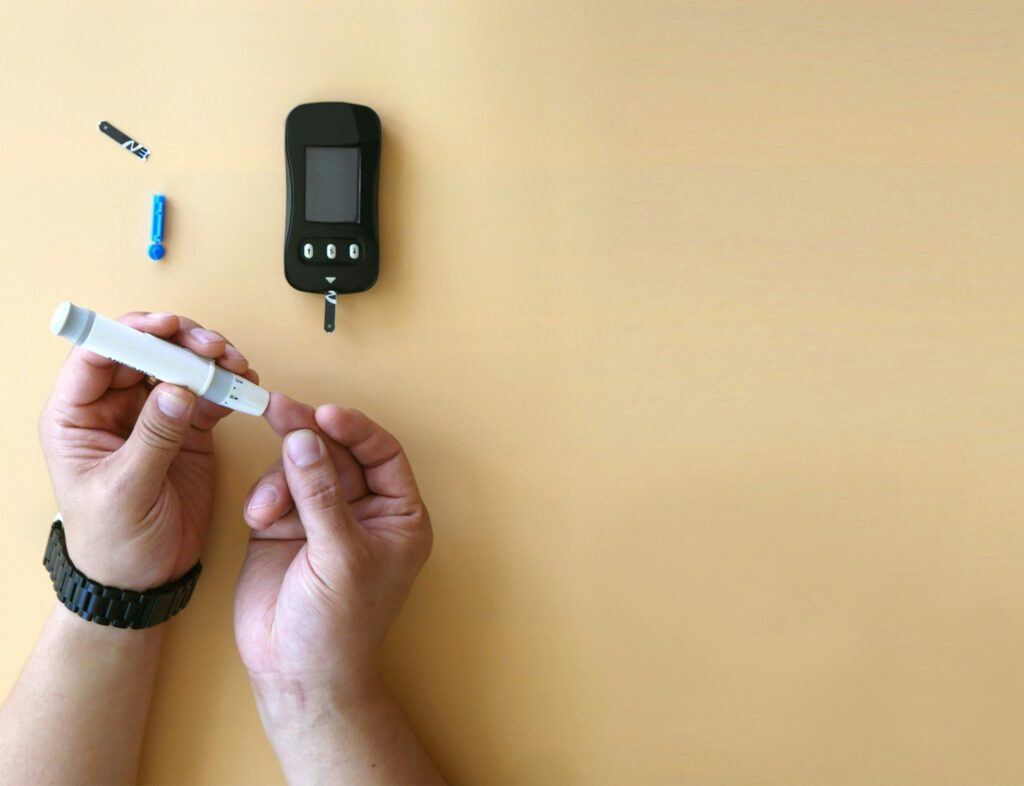Early detection can make all the difference in managing and preventing diabetes.
Our bodies give us a lot of signals, but when it comes to diabetes, the warning signs are often subtle — or even nonexistent. Many people don’t know they have it until it’s too late, but the good news is: early detection can make a world of difference.

Just like cholesterol levels, your blood sugar is a key indicator of your health. Understanding it can empower you to take control of your well-being before diabetes takes its toll on your body.
What is Diabetes, and Why Should You Care?
Diabetes is a condition where the body struggles to process glucose (sugar), either because it doesn’t produce enough insulin or because the insulin it produces isn’t working properly.

There are two main types of diabetes:
- Type 1 Diabetes is an autoimmune condition where the body attacks the insulin-producing cells in the pancreas. It typically develops in childhood or early adulthood and requires insulin for life.
- Type 2 Diabetes, the more common form, usually develops in adulthood but is becoming more prevalent among younger people due to lifestyle factors. It happens when the body either becomes resistant to insulin or doesn’t make enough of it. Type 2 is preventable in many cases with lifestyle changes.
Why Early Detection Matters
The tricky thing about diabetes is that, often, there are no clear symptoms — especially in the early stages. You could feel perfectly fine while your blood sugar quietly rises, slowly damaging your arteries, kidneys, and even your nerves. This is why early detection is key: it allows you to take control before complications like heart disease, kidney failure, and vision loss become real threats.
It’s important to remember that even if you have pre-diabetes (where your blood sugar levels are higher than normal but not yet high enough to be diagnosed as diabetes), this is an opportunity for intervention. The earlier you act, the better chance you have to reverse the course.

Also, what makes Type 2 diabetes so sneaky is that it can develop without obvious symptoms. In fact, many people don’t realize they have it until they experience complications like heart disease, kidney problems, or nerve damage.
By the time symptoms appear, it can be harder to manage, and the damage may already be done. That’s why early detection is so important. By identifying high blood sugar before it leads to full-blown diabetes, you have the power to make changes that can reverse the condition and prevent long-term complications.
How is Diabetes Diagnosed?
The first step in catching diabetes early is to get tested. The most common tests are:

- Fasting Blood Sugar Test: A blood test that measures your blood sugar after you haven’t eaten for at least 8 hours. A result of 100–125 mg/dL indicates pre-diabetes, and 126 mg/dL or higher means diabetes.
- Oral Glucose Tolerance Test (OGTT): After fasting, you’ll drink a sugary liquid, and your blood sugar is measured two hours later. A blood sugar level of 140–199 mg/dL indicates pre-diabetes, and 200 mg/dL or higher signals diabetes.
- A1C Test: This test measures your average blood sugar over the past 2-3 months. An A1C of 5.7%–6.4% means pre-diabetes, and 6.5% or higher means diabetes.
What to Look For: Early Signs and Risk Factors
Diabetes doesn’t always come with clear symptoms, but it’s important to be aware of the signs. Early warning signs include:
- Excessive thirst
- Frequent urination
- Fatigue
- Blurry vision
- Slow-healing wounds

Risk factors for Type 2 diabetes include:
- Being overweight or obese
- Having a family history of diabetes
- Being physically inactive
- Age (people over 45 are at higher risk)
- High blood pressure or high cholesterol
If any of these sound familiar, it’s a good idea to speak with your doctor about testing, even if you don’t have symptoms yet.
Preventing Diabetes: Simple Steps You Can Take
The good news is that pre-diabetes is reversible, and Type 2 diabetes can often be prevented, even in people who are already at risk. It starts with lifestyle changes. Here’s how you can help reduce your chances of developing diabetes:

- Eat a balanced diet rich in vegetables, fruits, whole grains, and lean proteins. Limit processed foods, sugary drinks, and refined carbs.
- Get active: Aim for at least 30 minutes of moderate activity most days of the week — walking, swimming, or cycling are great options.
- Lose weight: Even a small amount of weight loss (5–10% of your body weight) can significantly reduce your risk.
- Quit smoking: Smoking increases the risk of insulin resistance, which can lead to diabetes.
These changes can help keep your blood sugar in check and protect your overall health.
Who Should Get Tested for Diabetes?
The general recommendation is that adults over 45 should get tested for diabetes every 3 years. However, if you have any risk factors, it’s important to talk to your healthcare provider about testing sooner.

People at higher risk include:
- Those who are overweight or have a sedentary lifestyle
- Those with high blood pressure or high cholesterol
- People with a family history of diabetes
- Women who had gestational diabetes during pregnancy
If you’re unsure whether you should get tested, have a conversation with your doctor — they’ll help you assess your risk.
Empowering Your Health
The power to prevent or manage diabetes is in your hands. Early detection is key, and it starts with knowing your numbers. A simple blood test can give you the information you need to make informed decisions about your health and take action before diabetes takes hold.
Remember: the earlier you catch diabetes, the easier it is to manage. By monitoring your blood sugar, making healthy lifestyle changes, and being proactive about your health, you can catch diabetes before it strikes and protect your long-term well-being.



